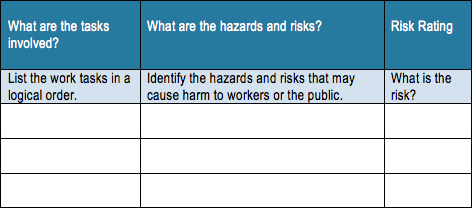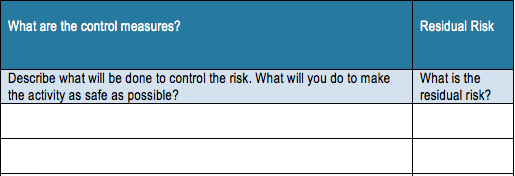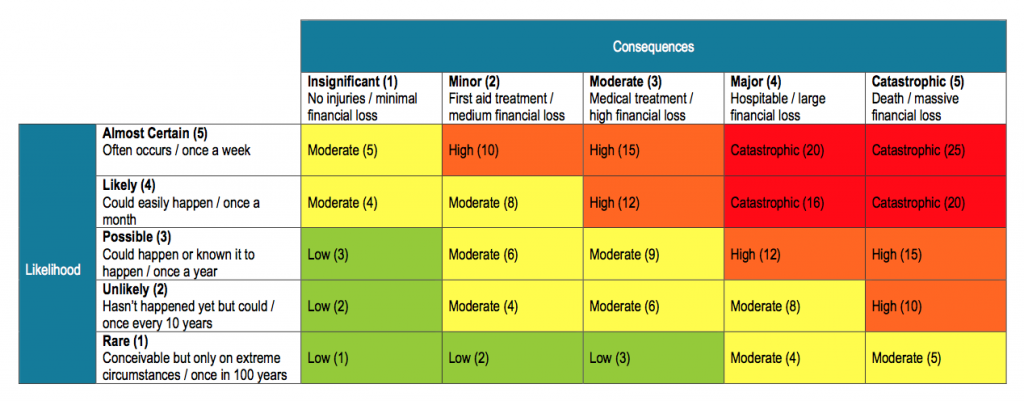How to Write a Risk Assessment
It seems like a straightforward process but risk assessments are a crucial part of displaying compliance with OHS laws and regulations. Without risk assessment forms there is no way for the relevant workplace health and safety regulator to determine if you have even attempted to maintain compliant OHS standards. Free risk assessment templates will give you a broad idea of what blank risk assessment forms look like but they won’t do the job for you. Knowing how to perform a risk assessment is relatively straight forward but getting it right involves several steps.
1: Hazard and Risk Identification

Risk assessments in the workplace should identify hazards through:
- Simple observation
- Consultation with workers and trade unions
- Checking the manufacturer’s instructions for equipment safety
- Reviewing accident and health/safety records
2: Identify who could be harmed
3: Decide on a risk assessment plan

Implement a risk management process that either eliminates the identified hazards or controls them within reasonable practice. This can be achieved by:
- Eliminating the hazards all together (level 1 risk control)
- Minimising the risks by isolating the associated risk or substituting it with a lower risk (level 2 risk control)
- Reducing risks by implementing behavioural and administrative controls, and by using personal protective equipment (level 3 risk control)
For more information on risk assessment plans, read about the risk management framework.
4: Record the findings on a risk assessment form
- To be compliant with OHS legislation Australia, specifically the WHS Act, risk assessments forms must be completed and signed by all duty holders (anyone with access to the worksite).
- Refer to the risk assessment matrix to gauge a numerical value on the hazards and the associated risks (see risk assessment matrix example below)

5: Review the risk analysis report
For more information, SafeWorkPro provides various risk assessment templates as well as other health and safety risk assessment forms. But ultimately risk assessment paperwork is time consuming and does not help you improve productivity. Risk assessment software streamlines this entire process into one simple tool available for download today. You can learn more about SafeWorkPro here.

